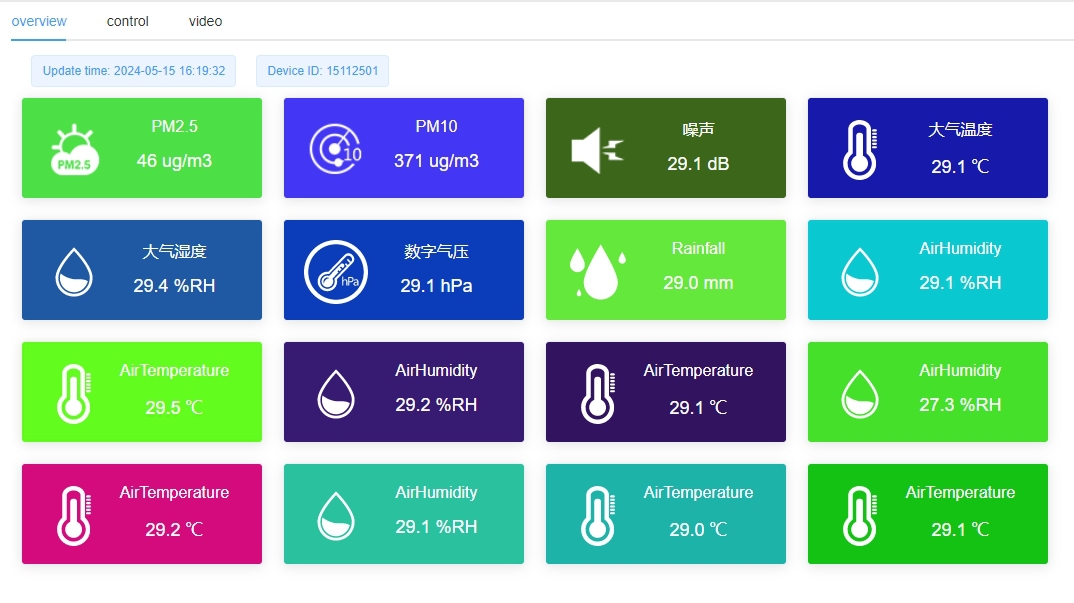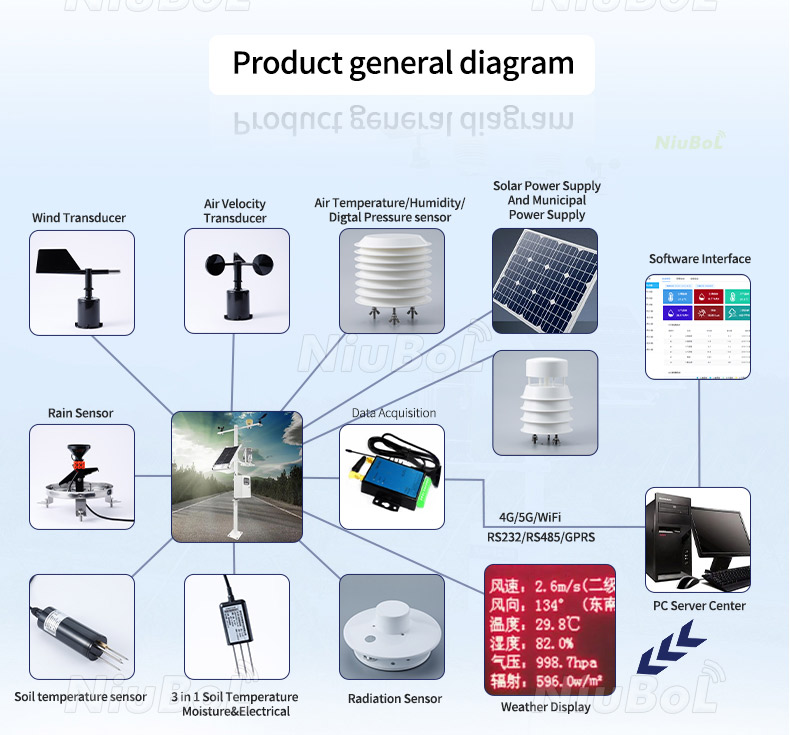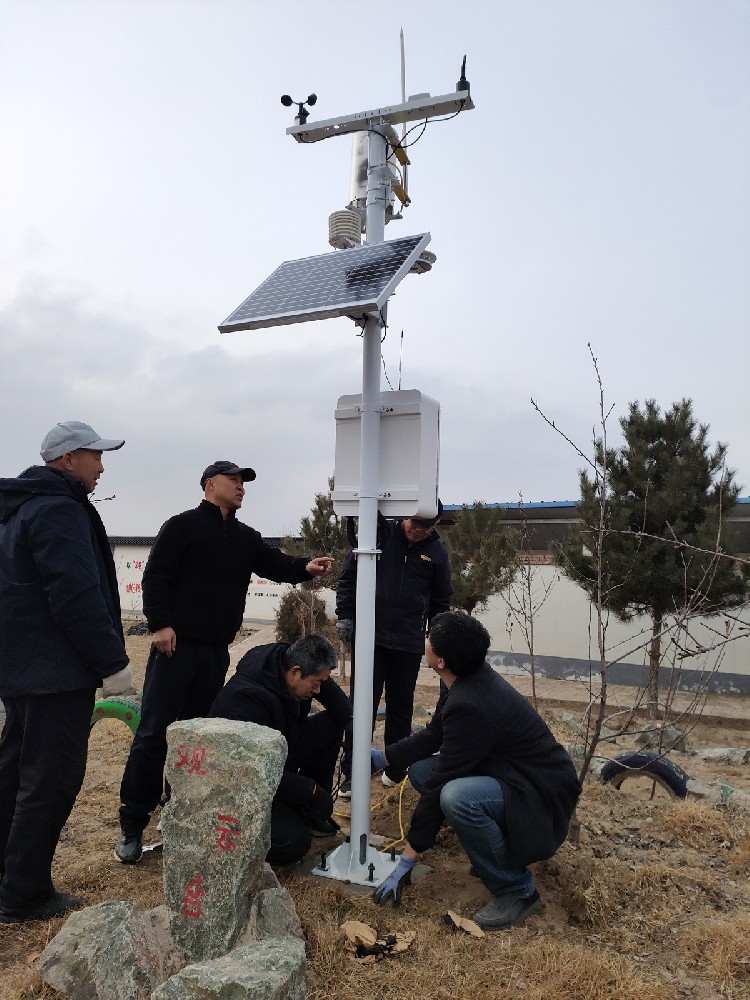

— Blogs —
—Products—
 Consumer hotline +8618073152920
Consumer hotline +8618073152920 WhatsApp:+8615367865107
Address:Room 102, District D, Houhu Industrial Park, Yuelu District, Changsha City, Hunan Province, China
Product knowledge
Time:2025-11-06 15:44:15 Popularity:230
A weather station is a device used to measure and monitor the atmospheric environment and its changes. It can collect and record various meteorological data, such as temperature, humidity, wind speed, wind direction, air pressure, precipitation, radiation, etc. These data are crucial for weather forecasting, climate research, disaster warnings, environmental monitoring, and industries like agriculture, shipping, aviation, and more.
1. Traditional Weather Station: Typically composed of multiple basic meteorological instruments to record conventional elements like temperature, humidity, air pressure, and precipitation. Widely used in meteorological monitoring and weather forecasting.
2. Automatic Weather Station: High degree of automation, capable of real-time monitoring of meteorological data through automatic sensors and transmitting it to a central processing system for analysis. Advantages include high-frequency and high-precision data collection without manual intervention.
3. Agricultural Weather Station: Specifically for agricultural meteorological monitoring. In addition to basic parameters, it often monitors factors particularly affecting crop growth, such as soil moisture and light intensity.
4. Marine Weather Station: Used for meteorological data collection at sea, monitoring ocean temperature, wind waves, sea levels, etc. Widely applied in marine weather forecasting and maritime safety management.
5. Mobile Weather Station: Can be installed on vehicles, ships, aircraft, and other mobile platforms to monitor meteorological changes in specific areas. Suitable for meteorological disaster emergency responses.
- Temperature: Air and ground temperature changes, affecting crop growth, climate change, etc.
- Humidity: Water vapor content in the air, directly influencing precipitation, evaporation, and frost.
- Wind Speed and Direction: Changes in wind speed and direction, critical for weather forecasting, pollutant dispersion, shipping, etc.
- Air Pressure: Atmospheric pressure changes, used for predicting weather changes and climate trends.
- Precipitation: Precipitation records essential for agricultural irrigation, flood warnings, etc.
- Radiation: Solar radiation, impacting photosynthesis, energy research, etc.
- Soil Moisture and Temperature: Particularly in agricultural weather stations, monitoring soil moisture and temperature is key for crop management.

1. Weather Forecasting and Climate Research: Accumulates long-term data for weather forecasting and supports climate change studies.
2. Agricultural Management: Provides real-time meteorological data to farmers for optimizing planting plans, irrigation, pest prediction, etc.
3. Disaster Warnings: Monitors typhoons, heavy rain, extreme temperatures, etc., issuing early warnings to reduce losses.
4. Environmental Monitoring: Monitors air pollutant concentrations to support environmental protection.
5. Shipping and Aviation: Provides real-time weather information for navigation and flight safety.
Modern weather stations mostly adopt automation technology, with data collected in real-time and uploaded to cloud platforms via wireless networks or other communication methods, enabling remote monitoring and analysis. Their applications extend beyond professional meteorological agencies to agriculture, aerospace, industry, and more fields.
In industries such as agriculture, energy, research, and environmental protection, meteorological data has become the foundational support for decision-making.
From irrigation control and climate research to photovoltaic power generation efficiency analysis—accurate meteorological data can significantly improve project returns, reduce risks, and minimize resource waste.
A reliable weather station can continuously and stably record environmental changes, helping users understand climate trends in real-time and achieve intelligent management.
However, the market is flooded with various weather stations, from simple home models to research-grade automatic weather stations (AWS). Prices range from a few hundred to tens of thousands.
Thus, the key is—how to select a truly "professional, durable, and data-reliable" weather station?

Before selection, distinguish the application levels of weather stations.
Uses: Hobby, personal observation
Features: Measures only temperature, humidity, rainfall
Drawbacks: Low accuracy, poor weather resistance, short lifespan
Price: ~$100–300
Uses: School experiments, science education, small research
Features: Adds wind speed, direction, air pressure
Drawbacks: Unstable data, poor scalability
Price: $400–800
Uses: Agriculture, photovoltaics, power, research, environmental protection
Features: Measures temperature, humidity, air pressure, wind speed/direction, rainfall, solar radiation, soil parameters, etc.
Advantages: High precision, anti-interference, environmentally durable, remote transmission
Price: $1,200–10,000+
Niubol weather stations belong to the third category—industrial-grade professional weather stations, ideal for long-term deployment, unattended operation, and remote monitoring.
High-precision sensors are the "heart" of a weather station. Recommended: Sensors meeting international standards.
All Niubol sensors undergo factory calibration and environmental testing to ensure long-term stability in extreme climates.
Communication methods determine continuous and accurate data delivery:
- RS485/Modbus: Common in industrial sites, strong anti-interference
- LoRa: Long-distance wireless, suitable for distributed agricultural deployment
- 4G: Real-time cloud upload, for large-scale monitoring
- Wi-Fi: For local networks and smart agriculture systems
Niubol supports multiple protocols, easily integrating with existing IoT platforms or third-party systems.
Outdoor stations must run 24/7.
Niubol uses solar + lithium battery power, enabling long-term operation in off-grid areas, with over 7 days of backup after power loss.
Environmental durability is key for stable long-term operation.
Niubol features robust structures + anti-corrosion coatings + IP65~IP67 ratings, with anti-UV, anti-salt fog, and anti-condensation designs for deserts, high temperatures, humidity, etc.
An excellent station should scale with projects.
Niubol supports sensor module combinations:
- Soil temperature/humidity/EC sensors
- Solar radiation and light intensity sensors
- CO2, PM2.5 extension modules
This modularity adapts to diverse needs, reducing upgrade costs.
| Type | Application Scene | Core Sensors | Price Range (USD) |
| Home Weather Station | Hobby, Home | Temp/Humidity, Rain | $100–300 |
| Educational Station | Schools, Training | Temp/Humidity, Wind | $100–300 |
| Professional Station | Agriculture, Research | Full set + Data Logging | $1,200–3,500 |
| Industrial AWS | Energy, Environmental | Custom Sensors + Remote | $3,500–10,000+ |
Niubol's flagship products are positioned in the $1,500–3,500 range, achieving the best balance of accuracy, stability, lifespan, and price—perfect for B2B projects in agriculture, energy, and research.

Niubol specializes in agricultural and environmental IoT devices, committed to making data the core of agricultural and research decisions.
- Modular Design: One-stop installation, operational in 30 minutes
- High-Precision Sensors: Factory-calibrated and third-party tested
- Solar Power: Supports remote and off-grid scenarios
- Multiple Protocols: RS485, LoRa, 4G, Wi-Fi optional
- Data Visualization Platform: Real-time viewing and remote management
- Rich Export Experience: Exported to over 60 countries including Philippines, Lebanon, USA, Canada, Saudi Arabia, Africa, Chile, Argentina, Colombia, Mongolia
Niubol provides not just equipment, but complete data acquisition and analysis solutions to build intelligent monitoring systems.
Monitors rainfall, temp/humidity, light, soil moisture to guide automatic irrigation, saving over 30% water.
Tracks solar radiation, ambient temp, wind, dust accumulation to assess efficiency and maintenance.
Used by universities, institutions for climate data, watershed hydrology, air quality long-term projects.
1. Define monitoring goals (agriculture, hydrology, energy, research, etc.);
2. List key parameters (temp/humidity, wind, rain, radiation, soil moisture, etc.);
3. Select communication (RS485, LoRa, 4G/5G);
4. Set budget and configure based on environment;
5. Contact Niubol technical team for professional solutions and quotes.
Niubol offers free selection consulting and customized system schemes for optimal performance and ROI.

Meets industry standards: Temperature ±0.3°C, Humidity ±2%, Wind Speed ±0.3m/s. All calibrated before shipment.
Yes. Solar-powered with large lithium batteries for continuous operation in prolonged rainy weather.
Yes. Niubol provides a cloud platform for real-time viewing, downloading, and historical analysis.
Only calibration or cleaning every 12–18 months. Niubol offers long-term support.
Yes. Customizable combinations like soil EC, solar radiation, PM2.5, CO2 sensors.
Standard 12 months, extendable via project agreements.
Fully compatible with Modbus, TCP/IP, API for seamless third-party integration.
Selecting a weather station is essentially building a trustworthy data infrastructure for your business or project.
A reliable one means: more scientific irrigation, efficient energy management, accurate climate analysis.
With industrial-grade precision, robust build, and flexible communication, Niubol is trusted by numerous overseas clients.
Whether in African smart farms, Middle Eastern PV stations, or South American research institutions, Niubol delivers stable, precise, sustainable data support.
Visit the official website : www.niubol.com
Learn more about automatic weather stations, soil sensors, and environmental monitoring systems, or contact us now for customized quotes and technical solutions.
Prev:How to Choose the Right Automatic Weather Station for Your Project
Next:Best Weather Stations for Smart Farming and Environmental Monitoring
Related recommendations
Sensors & Weather Stations Catalog
Agriculture Sensors and Weather Stations Catalog-NiuBoL.pdf
Weather Stations Catalog-NiuBoL.pdf
Related products
 Combined air temperature and relative humidity sensor
Combined air temperature and relative humidity sensor Soil Moisture Temperature sensor for irrigation
Soil Moisture Temperature sensor for irrigation Soil pH sensor RS485 soil Testing instrument soil ph meter for agriculture
Soil pH sensor RS485 soil Testing instrument soil ph meter for agriculture Wind Speed sensor Output Modbus/RS485/Analog/0-5V/4-20mA
Wind Speed sensor Output Modbus/RS485/Analog/0-5V/4-20mA Tipping bucket rain gauge for weather monitoring auto rainfall sensor RS485/Outdoor/stainless steel
Tipping bucket rain gauge for weather monitoring auto rainfall sensor RS485/Outdoor/stainless steel Pyranometer Solar Radiation Sensor 4-20mA/RS485
Pyranometer Solar Radiation Sensor 4-20mA/RS485
Screenshot, WhatsApp to identify the QR code
WhatsApp number:+8615367865107
(Click on WhatsApp to copy and add friends)
